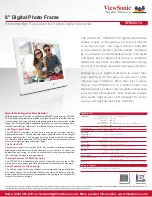
BOBCAT Hardware User’s Manual
Imperx, Inc.
Rev. 2.0.6
6421 Congress Ave.
11/20/2012
Boca Raton, FL 33487
+1 (561) 989-0006
118 of 265
TRIGGER
DATA
TRANSFER
EXPOSURE
STROBE
DATA
Exp.1
Exp.2
Exp.3
Exp.4
Exp.5
Trg.1
Trg.2
Trg.3
Trg.4
Trg.5
DATA
OUTPUT
Figure 2.17 – Frame accumulation triggering
E.
Asynchronous Triggering
When the Asynchronous triggering mode is enabled, the camera is free running (no
horizontal and vertical flushing prior to trigger). Upon receiving the external trigger
signal, the current CCD timing stops, all camera lines are rapidly flushed, and a new
frame starts – Figure 2.18. This completes the current trigger cycle, the camera free
running and waits for the next trigger pulse. In this mode the camera exposure can be
controlled with the internal shutter or with the trigger pulse width. The time required
for rapid line flush (all charges stored in the vertical registers are cleared) is camera
dependent and if the camera is triggered via CC line, and the camera exposure is
determined by the duration of the CC pulse, the CC pulse duration must be longer
than the rapid flush time, as shown below.
TRIGGER
EXPOSURE
DATA
DATA
VCCD
DUMP
DATA
DATA
DATA
SHUTTER
Figure 2.18 – Asynchronous triggering
F.
Exposure Delay
The user can delays the beginning of the triggering sequence (beginning of the
exposure) with respect to the trigger pulse. The delay can be programmed from 0 to
~16,777 seconds.
















































